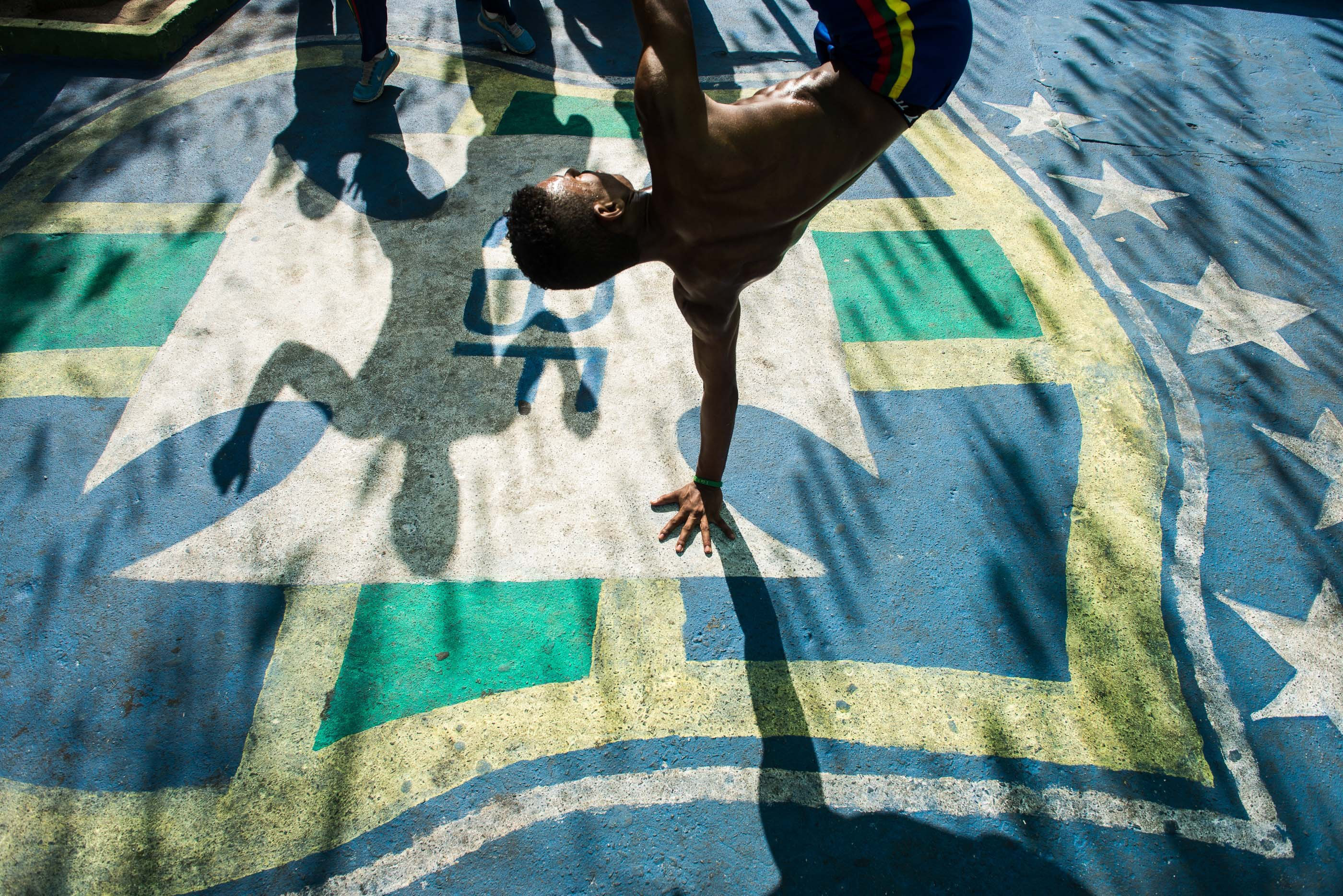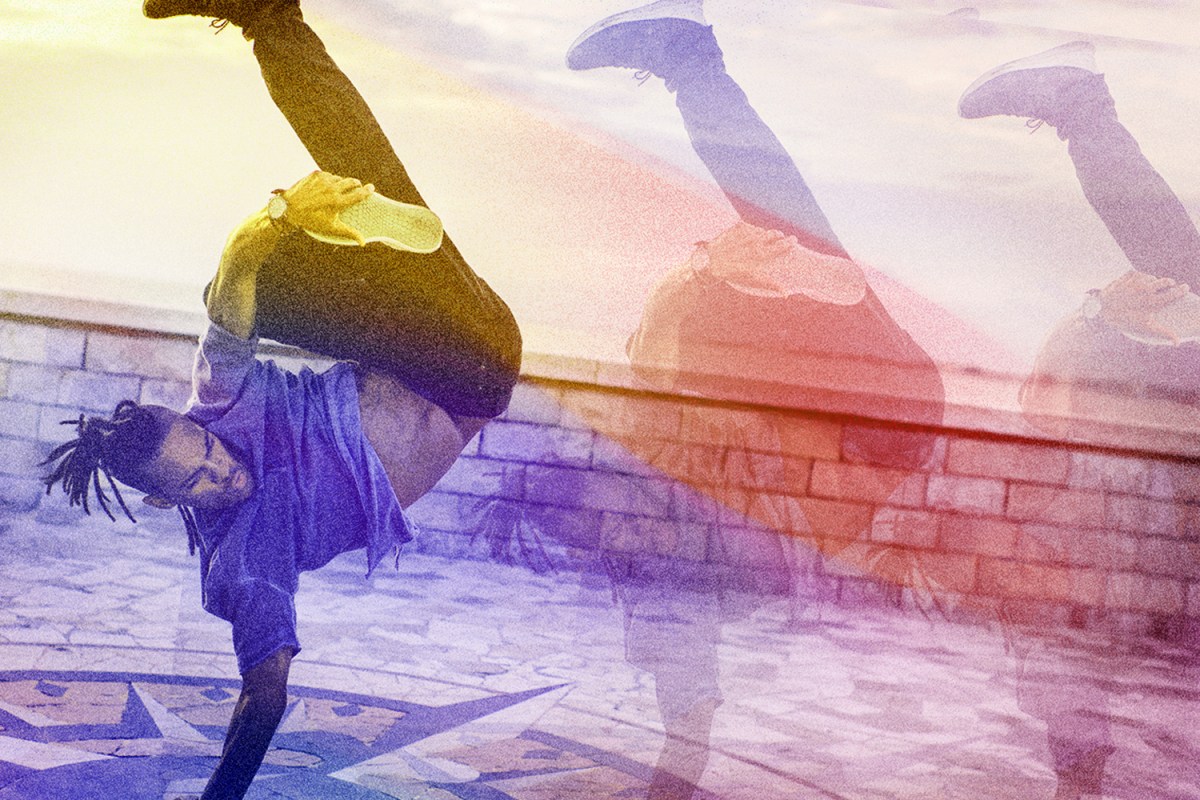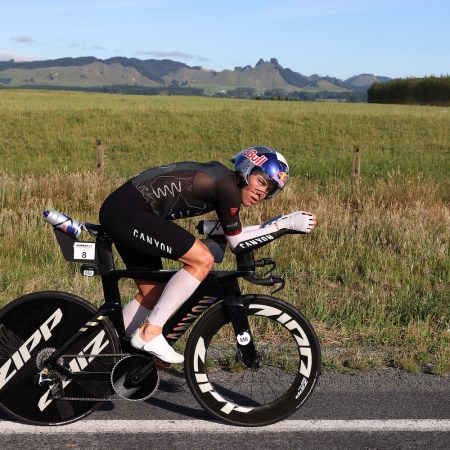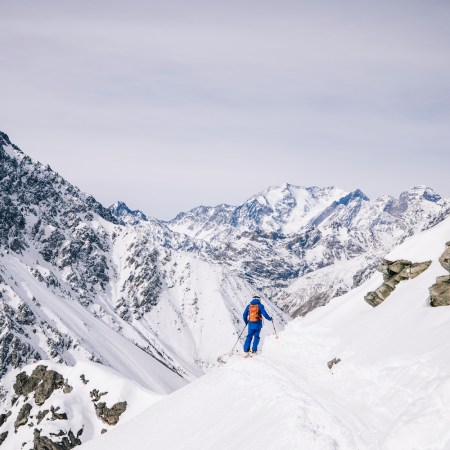Before becoming a world champion breakdancer and Red Bull BC One All Star, Neguin started as student of Capoeira in his birth country of Brazil.
The traditional martial art, born out of traditions from enslaved Africans and indigenous Brazilians, was created as an expression of freedom in the early 16th century. The complex combination of fighting, dancing, drumming and aerobatics has made it a largely misunderstood art form. But as one of the elite breakdancing talents in the world, Neguin is doing what he can to enlighten the masses with his Capoeira-infused moves and gravity-defying flips.
So far, Neguin has performed on America’s Got Talent, Madonna’s MDNA tour, and the Red Bull BC One competition floor, where he’s the only Brazilian to ever win a championship belt. Over the years, he’s traveled to 141 countries and participated in over 100 tournaments, earning his place as mentor and judge for the Red Bull BC One National Finals this year.
Despite the exposure he’s already garnered for Capoeira, Neguin still hopes to further the message and maybe even star in a Tekken movie, where he could play Capoeira’s most famous character, Eddy Gordo. We spoke to the 35-year-old about the differences between Capoeira and breakdancing, the toughest kicks he’s ever learned and what makes the art form unlike any other on the planet.
InsideHook: How you would describe Capoeira to people?
Neguin: If you’re going to understand Capoeira, you have to first understand where Capoeira comes from. It was born out of resistance. It was invented by the enslaved Africans in Brazil. The government tried to forbid it from being practiced. They outlawed it and tried to destroy it, but it survived in these small pockets. Even when other martial arts were coming into Brazil, it was still forbidden.
It’s a 100%, genuine Brazilian martial art, but it also goes well beyond martial arts. It’s sport, culture, folklore and so much more. Capoeira is whatever you need it to be in the moment; it can be a means of self defense or a means of healing. It’s the most amazing art form, and in my opinion, the most complete one. I know I have a deeper understanding of our culture because I practice Capoeira.
The body has always seemed very free in Capoeira. How would you describe its movement?
I would say it’s different than other martial arts where you’re only moving forward and thinking about what’s in front of you. But in Capoeira, a kick can come from anywhere and from any position. We’re able to generate that power from any direction, and discover the full potential of our bodies. The movement of Capoeira goes from lower to higher, and from softness to explosiveness, unlike anything else. Everything is at your disposal so that you can follow the flow of the music.
This is a spiritual practice, and it’s not just about learning movements. Because it happens in a circle, it feels that much more connected to the universe. In every moment, though, you’re also aware of what the other person that you’re playing with is doing, so your eyes are always locked and aware.
How does one start training Capoeira?
There are levels to every art form, and you start with the slower, more fundamental moves of Capoeira: the attacks and escapes. The cadence of the music is what you need to learn and pay the most attention to. One of the first parts of your training is learning to play the drums, so you’re using both sides of the brain. There are a number of masters who have helped lead the shape of Capoeira today. The main one I look to is Mestre Camisa, who is my master.
Capoeira takes longer to reach the next level than other martial arts. I got my black belt after training in jiu-jitsu for 10 years, while I’ve practiced Capoeira for 31 years and am just an instructor. Capoeira is not just about knowing how to fight, it is also about playing the instruments, writing the music and so on. There are so many layers to this particular art form.

Can you describe one of the layers of Capoeira that is fundamental?
The most difficult and important element of Capoeira to master is the “escapes” while fighting another. If you don’t know how to do an “esquiva,” which means escape in Capoeira, then you’re going to get knocked out. Why? Because it’s completely unpredictable. The kicks can come from anywhere.
There is a massive requirement for awareness when you are doing Capoeira, because it’s a different kind of attack than something like jiu-jitsu. If you’re rolling jiu-jitsu and get me in a triangle, I’m able to tap and the other person understands that. But there’s no time to tap in Capoeira. I could try an offensive kick, and if you don’t know how to escape, then it’s going to land no matter what we do.
Can you describe some of the strikes that are found in Capoeira and nowhere else, which make it so original?
Many of the kicks that you are familiar with from muay thai and karate exist in Capoeira, as well as takedowns you’ve probably seen from other martial arts, like judo. But there are also moves that only we have, like the Meia Lua de Compasso or Chapeu de Couro, which are both brutal. If either of those make contact, it’s over for you. If it hits your body it’s going to break your ribs and if it hits you in the head it’s lights out.
The Meia Lua de Compasso got its name because it’s like a compass. It’s a 360-degree kick that starts from the back, and your hips rotate at 180 degrees like a swing kick. It’s good to practice on a standing bag or someone holding a flip-flop or striking pad in front of you. The heel is the part of the foot that needs to land, and you need to be able to aim it well, whether someone is standing or on a lower position.
Capoeira is also a dance in some situations, where you are “playing” with another attacking and escaping without hitting. How difficult is that?
There’s a unique difficulty to practicing a martial art that forces you to consider the actions of another in order to prevent damage. That awareness helps you sense when someone might make a mistake. I’m lucky to have never been hit myself, and have only struck another once. During one session, I hit the person I was playing with in the face and broke his nose. He made a mistake in his escape, and I tried to hold back but it was too late. The kick had already been delivered with force. He was not a beginner, he had graduated, so he was capable. I think that would be hard for an outsider to understand.
How did you find yourself drawn to the world of breaking?
I fell in love with breakdancing when I first saw it, and especially what people were doing in New York. I knew that I would be able to bring something original and different to breaking with Capoeira. The fact is…Capoeira is very Brazilian in its ability to make us and what we do better. We’ve seen it many other times across the culture, with music or football. Even the UFC owes much to Brazilian culture with jiu-jitsu and what the Gracie family was able to bring. I knew that it would do the same for break.
Can you share the similarities in the way you approach the two?
I believe there are a lot of similarities between break and Capoeira. They are both rebellious in nature and have evolved in a similar off-the-grid way all over the world. For me, breaking and Capoeira are two different languages that I’m using together in competition. Like now, I can speak English, Brazilian, Spanish or another language to get my point across in the way that I want. I also approach them similarly when it comes to the competition element. I go in there wanting to win.
Both Capoeira and breaking are intensely physical, done in these quick bursts. How do you train for something like that?
In a Capoeira circle, you might play for one minute, but it will feel like ten seconds. The way that the music is, and the rhythm you are feeling in your chest…it goes beyond how you are feeling physically. There is something spiritual about it. The same with breaking — you’re moving for minutes, but it flies. How I train in the gym depends on how my body is feeling that day. If I feel like there’s some weakness in the pull or push of my arms, then I’ll do whatever it takes to fix that. I want to feel flexible, powerful and healthy overall. The practice matters. If my lower back starts to hurt then I will go and practice jiu-jitsu, because of the way that it can open up your hips. And it’s the same on the other side. If I have been practicing jiu-jitsu for too long, and my fists start to tighten up, I’ll go practice Capoeira. But the most important thing for both is to truly enjoy and live the culture. There are people who see a Capoeira move or break and think that they can just take that little piece and make it seem like they understand.
For Capoeira, are there any movies that have done it justice?
There is one movie in particular, Only the Strong, that came out very well and stars my friend Mark Dacascos. I enjoyed getting to see Capoeira so well represented. In the movie it really showcases it as a martial art. I have found that there are a lot of people who actually forget that it’s a martial art, and only think of it as a dance. But really it is one of the most complete martial arts there is, with takedowns, traumatizing kicks, strikes and escapes.
Did you ever play Tekken? I remember Eddy Gordo being my favorite character, and it was probably the first time I saw and was curious about Capoeira. Feel like you would make an awesome Eddy Gordo.
Yes! I definitely played it and I definitely enjoyed it. It was the last game that I actually regularly played as a kid. I had the PlayStation, which I used to play Tekken 2 and Tekken 3. I think the fact that I could do everything that Eddy Gordo was doing in the game added to the enjoyment of it. Most of the moves that they have Eddy do in Tekken are legit — I remember once seeing him do a Queixada. Then there are other movements they added in that don’t really exist in Capoeira, like a windmill and a flare. Those are actually more like breaking movements, that we’ll use. But in any case, I can do it all. I would love to do a Tekken movie.
The Charge will help you move better, think clearer and stay in the game longer. Subscribe to our wellness newsletter today.

























